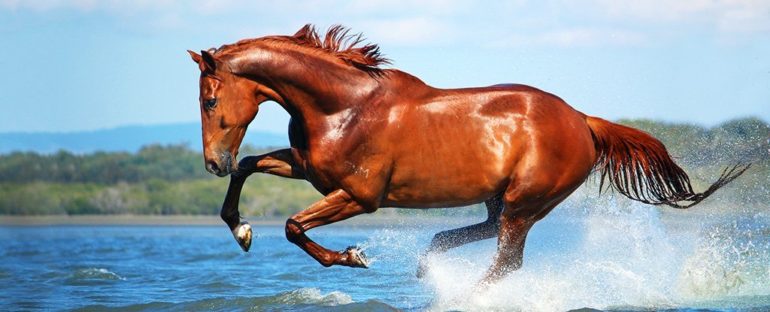The ancestral homeland of all modern domestic horses was likely located along the steppes of Western Eurasia around 4,200 years ago, according to new genetic research.
Within just 1,000 years, the powerful and docile horses raised here, in what is now modern Russia, seem to have replaced all the other breeds in Europe and Asia.
By 1000 BCE, horse travel had officially gone global, fundamentally transforming human movement, culture, and warfare.
The ancient horses bred in the lower Volga-Don region of Russia were not the first to be domesticated by humans – there are older examples of horse riding in Central Asia, Iberia and Anatolia – but the particular genetic profile of these creatures seems to have been the most useful to humans.
When researchers mapped the population changes of 273 ancient horse genomes, each from a possible location for horse domestication, they found modern domestic horses were clustered in a group that became geographically widespread in the second millennium BCE.
In the end, this cluster was most genetically similar to horses that lived in the Western Eurasian steppes before and during the third millennium BCE.
The results suggest the ancestors of modern domestic horses replaced virtually all the other horse populations as they expanded across Eurasia.
“We thus conclude that the new package of chariotry and improved breed of horses, including chestnut coat coloration documented both linguistically and genetically, transformed Eurasian Bronze Age societies globally within a few centuries after about 2000 BCE,” the authors write.
“The adoption of this new institution, whether for warfare, prestige or both, probably varied between decentralized chiefdoms in Europe and urbanized states in Western Asia. The results thus open up new research avenues into the historical developments of these different societal trajectories.”
The horses bred in this ancient part of Russia hold two key genes that seem to set them apart from other populations that lived at the time.
One gene, called GSDMC, is linked to more docile behavior, while the other gene, ZFPM1, is linked to a stronger backbone.
Both genes suggest the horses were bred for riding, with good endurance and weight-bearing ability, as well as a calm and trusting temperament.
The findings join a growing list of studies that counter a previous assumption that horseback riding was brought to Europe by nomadic herders from the East around 5000 years ago.
Instead, the authors of this new study say the globalization of horse riding came about at least a thousand years later, when horses from the Western Eurasian steppes expanded into Anatolia, the lower Danube, Bohemia, Central Asia and then on to Western Europe and Mongolia.
Between 1500 and 1000 BCE, genetics suggest these domesticated horses had replaced all other location populations. Humans had made their ‘perfect’ horse.
“This process first involved horseback riding, as spoke-wheeled chariots represent later technological innovations, emerging around 2000 to 1800 BCE in the Trans-Ural Sintashta culture,” the authors explain.
“The weaponry, warriors and fortified settlements associated with this culture may have arisen in response to increased aridity and competition for critical grazing lands, intensifying territoriality and hierarchy.”
In other words, it might have been climate changes that first drove horse breeders in Western Eurasia to expand outwards into other lands in Central Asia, bringing their animals with them.
Over the next few centuries, their conquests into Asia could very well have spread their breed of horse as well.
The spread into Europe might have happened slightly differently. Instead of war bringing horses into this part of the world, the authors suspect specialized horse trainers and chariot builders were spreading their skills, which would have been superior to whatever existed locally.
“In both cases,” the authors conclude, “horses with reduced back pathologies and enhanced docility would have facilitated Bronze Age elite long-distance trade demands and become a highly valued commodity and status symbol, resulting in rapid diaspora.”
Human society would never be the same.
The study was published in Nature.
